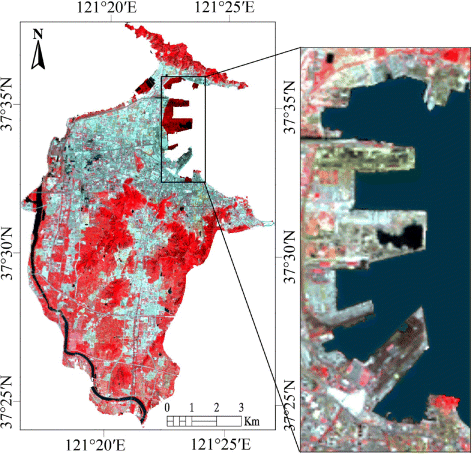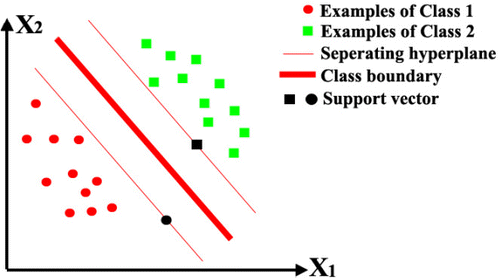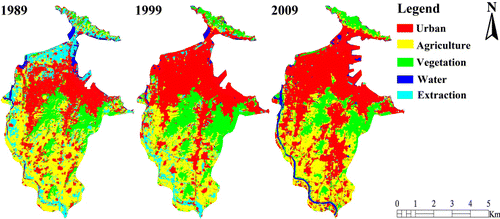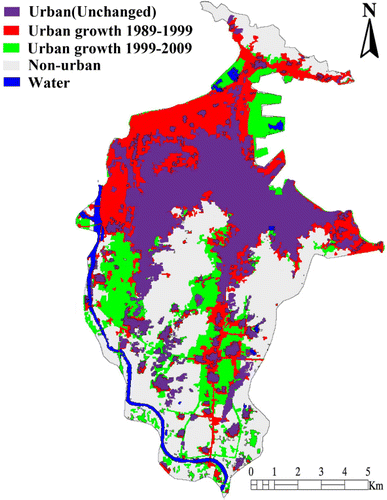Figures & data
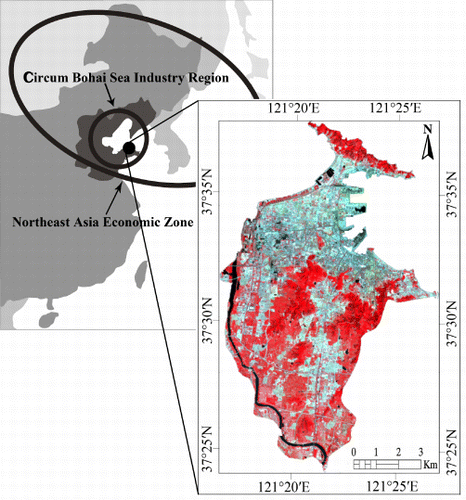
Table 1. Data types used in this study.
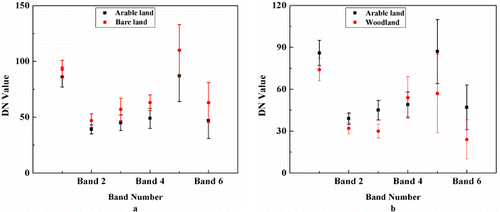
Table 2. Land cover classification scheme.
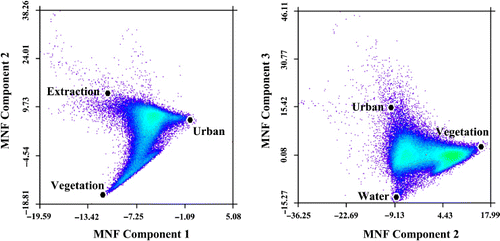
Table 3. Summary of classification accuracies for 1989, 1999, and 2009.
Table 4. Change detection error matrix for 1989–2009.
Table 5. Summary of land cover area statistics in 1989, 1999, and 2009.
Table 6. Matrices of land cover and change statistics (km2) from 1989 to 2009.
